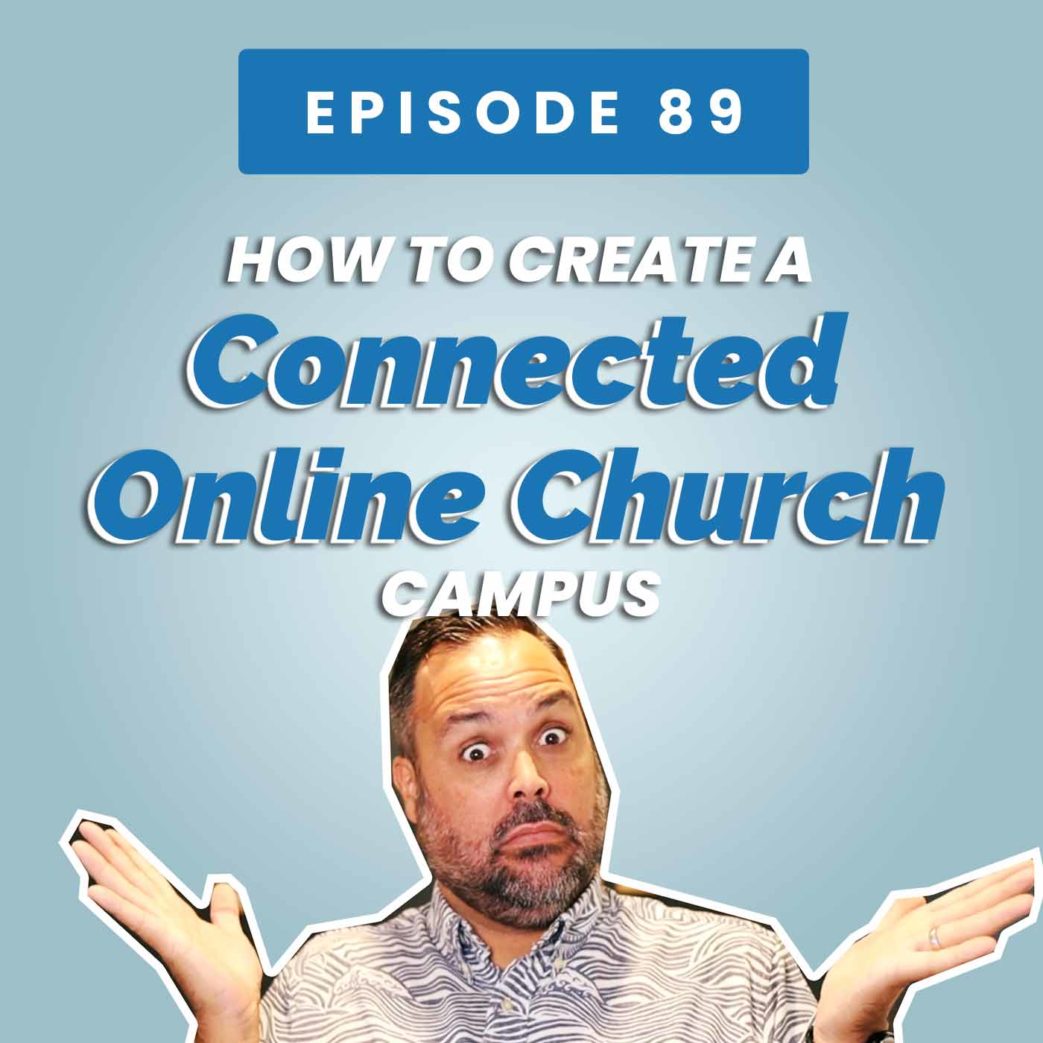Won’t an online church campus just result in shallow relationships and fragile connections?
Doesn’t offering an online church option cannibalize your live services and groups?
While we used to hear these concerns about online church campuses, they aren’t so common anymore.
We realize the virtual landscape is changing fast. With the proliferation of social media platforms, dating apps, and the rise of the metaverse, churches need to be aware that an online church campus will become an expectation for many people, if it isn’t already.
An online church campus has to be more than an option for viewing Sunday service in your pajamas. It’s an opportunity to cultivate community and broaden your church’s reach.
So here are seven key tips to create a close-knit online church campus on your website.
Table of contents
Website
It all starts with your website, you have to get this fundamental building block right. Your online church campus should be easy to find on your website. Also, you’ll want the live service watch button front and center.
In addition, the online church campus needs its own landing page. This can be a hub for information that applies specifically to the online campus, like how they can join a group or volunteer virtually.
Ensure your overall website is well-designed and checks the boxes when it comes to:
- clear navigation
- professional appearance
- fast loading time
- mobile-friendly
An Online Campus Pastor
Having a leader of the online campus makes the experience more personal. People want to have a face and name to identify with.
This doesn’t have to be a full-time position, and could even be a volunteer. Whether you choose an Elder, staff member, or church leader, this person should have some experience in both technology and ministering to people.
Some ways the online campus pastor can connect might be:
- featuring a photo and bio on the landing page
- participating in live service chat
- sending weekly emails and making social media posts
Online Service Experience
Your online church campus service experience won’t be exactly the same as the in-person service. Rather than comparing the two, focus on factors that make for a great online viewing experience.
This may involve an investment in equipment (like lighting, microphones, and cameras), technical training, and a live stream platform.
Church Online is a well-known free platform, or you can check out other live stream options ranging from $15 to $99 a month.
Remember that you can also live stream services for free via Facebook Live and YouTube Live. If you have a church app, that might also include a live stream.
The main benefits of streaming services on multiple platforms are reaching a broader audience (especially if people share the stream) and allowing people to choose their personal preferences.
The main drawback is ensuring the experience is consistent across all platforms when it comes to live chat, links to connect and participate in service elements, and follow-up.
Inclusive Language & Experience
Throughout service, be sure all the speakers are using language that includes both in-room and online audiences.
Looking directly into the camera and calling out the online audience is one aspect of being inclusive.
Another is ensuring that whatever you’re talking about in the room is applicable online:
- When it’s time to fill out a welcome card, is there a button leading to a digital form for online church?
- When it’s time for tithes and offerings, is there a button for online giving?
- If prayer partners are available at the end of service, can online viewers pray in a private chat room, or submit a confidential prayer request?
You need to think through service flow and ensure all interactive elements have links and forms set up from your online streaming platform page.
Live Chat
We’ve learned a lot about online chat since the heyday of the pandemic. Yes, it is essential to have a live chat option before, during, and after service for people to interact.
But one lesson we’ve learned is that the chat can get quiet in the middle of the service, and this should be expected if people are actively engaged and listening.
Wouldn’t it be distracting if people were having a side conversation in the middle of a live service? Or have to interrupt worship so they can drop an emoji? Rather than force chatting throughout the entire service, focus primarily on engaging before and after service.
The live chat is also very useful for dropping links throughout service such as connect cards/forms, online giving, prayer requests, etc.
Ministry Connection
Church isn’t defined as simply a building or a Sunday service. The Greek word ecclesia in the New Testament and the Hebrew kahal in the Old Testament are both translated as “an assembly.” It’s all about people gathering and connecting.
So, think through how you can encourage your online church campus to:
- assemble regularly
- build relationships
- grow in discipleship
- serve others and reach their community
- engage kids and youth in the online campus
Even when people are meeting virtually and long-distance, you can still build relationships with regular online meetings and communication. (Just look at the success of online dating platforms; they’re projected to have 501.7 million users by 2026.)
Virtual small groups or Bible studies should be a key feature on your online campus landing page. Groups could meet for sermon discussion immediately following viewing of the weekend service. Or, they could meet throughout the week like in-person small groups.
You can also provide ways for online church members to join volunteer teams. They can serve others in the online church campus, and through outreach in the local community.
Knowing all this, it’s vital to have an assimilation and leadership pipeline for your online community. Make it clear to people on your online church campus landing page how they can connect and get involved.
An Online Campus Team
Larger churches often feature an engaging “pre-service” stream featuring live hosts and announcements. Your church may not have the capacity to offer this every week, but it is important that your campus has visible and consistent leaders beyond the campus pastor.
Leaders could be in the service chat every week, post regularly in a Facebook group, or be highlighted in a weekly email. They can be the ones leading online assimilation classes and virtual small groups.
However it looks for your church, make sure that people can identify a stable leadership structure with real people they can reach out and interact with.
What are your top tips for creating a great online church campus on your website? Let us know in the comments!
More on building an Online Church Campus





